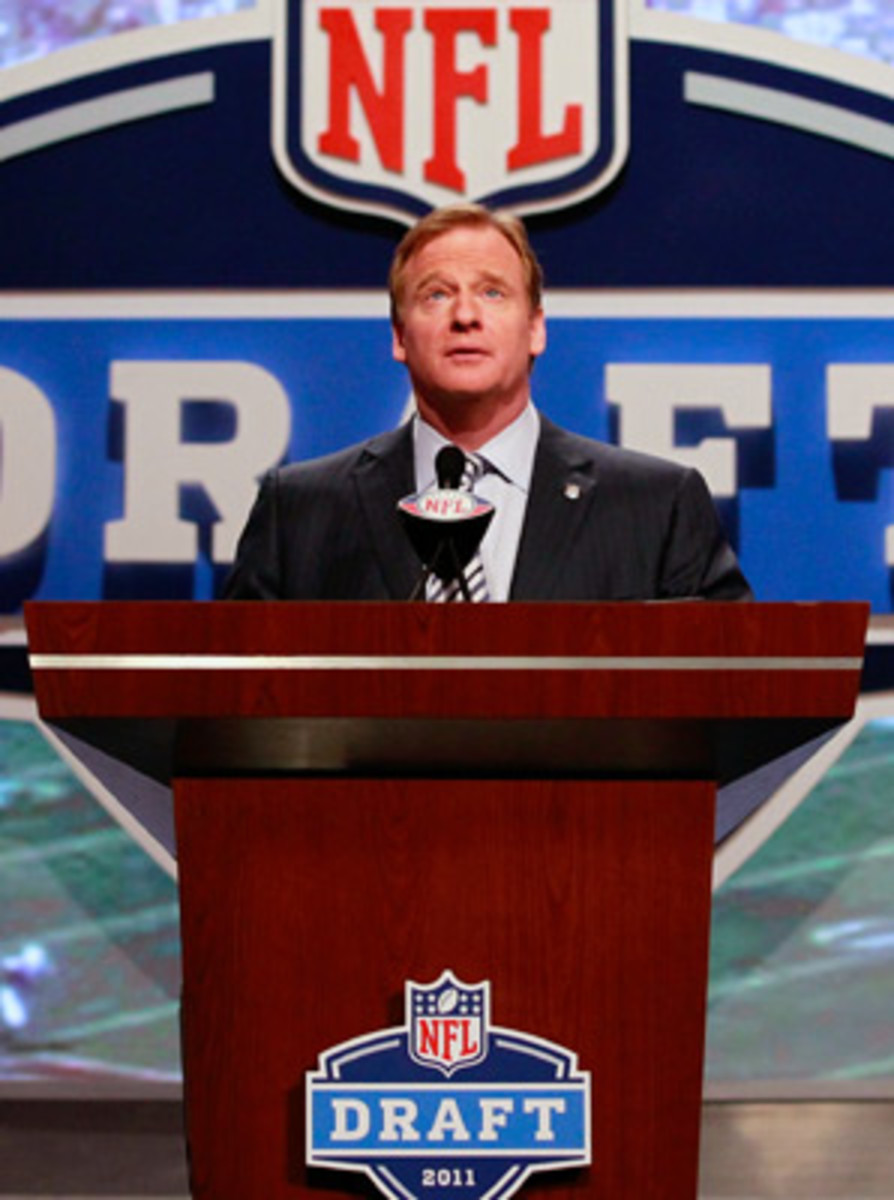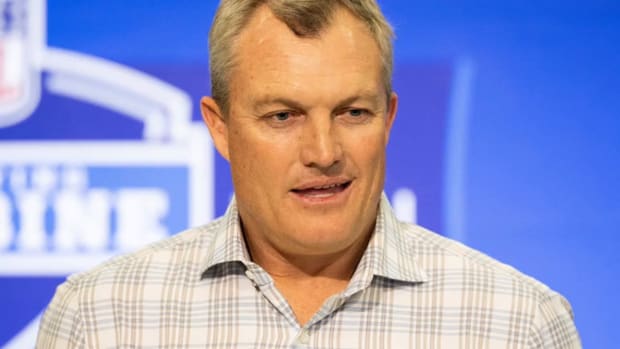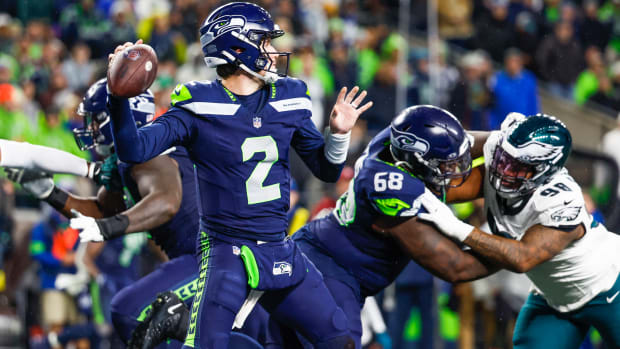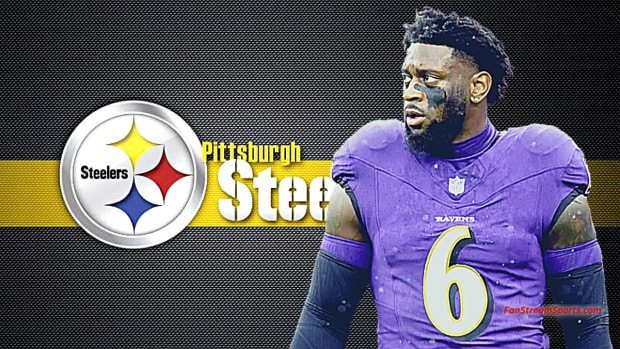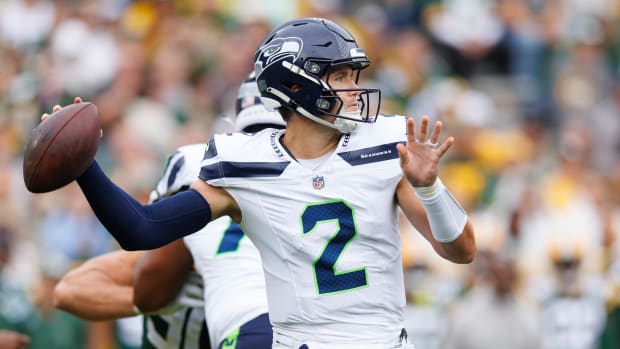A behind-the-scenes look at what goes into an NFL Draft telecast
On Thursday night, inside a production truck on a side street near Radio City Music Hall, Charlie Yook will be making multiple decisions about what you see during the NFL Draft.
As a senior producer for the NFL Network, Yook will be informed of a team's pick about 90 seconds before NFL Commissioner Roger Goodell announces it to the world. He'll ask one of his colleagues inside the truck for what he calls "a baseball card graphic," which is a full-screen graphic of biographical information of the draft pick. Another staffer will call up a package of highlights on the player while Yook or another producer might feed NFL Network host Rich Eisen an interesting detail unearthed by research. If a trend emerges -- say a cornerback has not been selected for 25 picks -- NFL Network senior researcher Chad Reuter will let Yook know that it might be worth using in the broadcast. "As long as I have a graphic, video, a nugget, and some discussion about the pick, I feel pretty confident," said Yook, who is working his sixth draft for the NFL Network. "I think the audience wants to know, 'How did my team do? How does this help my team? And what does this all mean?' They also want to see cool footage of kids."
While ESPN's Mel Kiper Jr. and the NFL Network's Mike Mayock will be the front men for the three-day selectapalooza that begins Thursday night, there's a core group of behind-the-scenes staffers at ESPN and the NFL Network who work endless hours unearthing the factoids and footage for the next wave of NFL talent.
Two of those staffers at ESPN are Jeremy Drummund and Trevor Gavin, a pair of twenty-something production assistants whose draft process begins in late January when they meet with draft analysts Kiper and Todd McShay to identify the top prospects at each position. At that stage, they cut down a list of 700 draft eligible players to around 300. "We know the top 50 or so players but that meeting is key for players 51 to 300," Gavin said. "Also it's key for a lot of small school guys we can get a jump on. For example [defensive lineman] Akiem Hicks from the University of Regina."
Drummund and Gavin then go to work on compiling and editing the video that will become the 30- to 50-second clips viewers see on ESPN's draft coverage. The production assistants divide prospects by conferences, and often end up calling small schools or Canadian universities for not-easy-to-procure footage.
Each network that airs college football shares melts (slang for a meltdown of the game) and a game melt will have footage of top-scoring plays, big tackles, sacks, interceptions, and multiple angles of big plays. The goal for staffers such as Drummund and Gavin is to find signature plays from the draftees or footage that amplifies the prospect's skills. It's a project that extends from the University of Alabama to Division III Huntingdon College in Alabama (the alma mater of wide receiver Cody Pearcy, a late-round prospect this year). Gavin said a clip reel for a top player such as Stanford quarterback Andrew Luck could be two hours long after pulling all the highlights. Following the scouting combine in Indianapolis two months ago, ESPN's video library had swelled to about 275 prospects. The network has seven PA's that help putting together highlights, NFL edits and other video packages.
At the NFL Network, Yook said six staffers are involved in finding footage and double that who work to create graphics packages. "It starts with individual footage of 150 players by the Senior Bowl and by the time we get to the combine, I want that number to be as close to 300 as possible," Yook said. "The goal this year by the draft was to have footage on about 500 players and 1,800 total video clips, and I think we will hit that."
Those in charge of highlights and graphics work in concert with the research staff. Along with obsessively tracking prospects year-round, Reuter traveled to the East-West Shrine Game, Senior Bowl, SWAC All-Star game and scouting combine this year to provide a comprehensive research binder for producers and on-air staffers on each potential draftee. ESPN NFL News editor Jim Carr provides a similar role for his network. Carr said he has researched more than 350 potential picks this year and his "Carr Notes," as Drummund describes them, are thick packets of notable nuggets and articles on individual players. (Carr said a high draft pick such as Luck might have a 20-25 page file.) During the draft, Carr sits inside one of two ESPN production trucks outside of Radio City and alerts ESPN's lead producer Brian Ryder on any trends and news around the league. He also monitors social media and works with reporter Suzy Kolber on subjects to broach during green room interviews. "I want to go into heavy detail on the first three rounds, and find interesting stories on the guys in the later rounds," said Carr, a former PR director of the Kansas City Chiefs who has worked for ESPN since 2003.
At ESPN, once they learn of the pick, Drummund cues up a highlight package while Kyle Brown, an associate producer and the point person for the graphics design and team specific graphics, and Gavin get the graphics ready.
"So when Luck goes in the first round, you will see Stanford information, the highlight package, and then what we call the back end with the Colts logo and all the requisite NFL information," Gavin said. "The viewer sees the great product, but we'll get upset if we missed something by a half-second. We want to make sure all the elements appear on the air and make you excited for the player you just got."
The NFL Network often plays a game with viewers late in its coverage on the final day of the draft where on-air staffers (and Twitter users) will try to stump the production truck by throwing out obscure prospects to see if the production crew has video on the player. More often than not, the NFL Network has it. "I know how much pride these guys take when it's the sixth round, somebody gets selected and some of us in the truck are going 'Who?' and they say the highlight is ready," said NFL Network executive producer Eric Weinberger, who oversees the draft for his network.
Everyone who works on the behind-the-scenes elements of the draft has a favorite story of when something they unearthed made air. While cutting up footage on Utah last year, Drummund kept noticing inside linebacker Stevenson Sylvester making plays. He let his bosses know that even though Sylvester was not on most draft boards, he was still going to cut up footage of the player. Sylvester ended up being selected in the fifth round by the Steelers and ESPN had a package ready, thanks to its heady staffer.
"Fast forward a month later and Jeremy and I are working the Spelling Bee when a freelance PA tells us about this great steal his team had drafted," Gavin said. "It was Stevenson Sylvester, and we all had a good laugh about it."
































